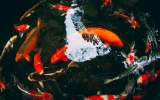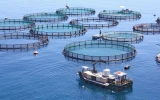Modern Fish Farming Techniques: 7 Insider Tricks
The fish farming industry uses different systems, such as aquaponics and cage farming, to cultivate a variety of commercial fish species. These methods are revolutionizing the way fish are raised and, ultimately, the quality and sustainability of the seafood that reaches your plate. To know where to start, we'll uncover seven insider tips you can use on your fish farm to become more environmentally sustainable and financially profitable.
- Choose a site that has access to clean water, good soil, and proper drainage
- Monitor pH levels, dissolved oxygen, and temperature in the water
- Maintain a proper stocking density
- Feed the fish at regular intervals
- Quarantine new fish
- Use renewable energy sources
- And ensure a steady demand for the fish.
You can employ these simple tricks to ensure that your fish thrive, no matter what fish farming method you choose. Whether you're using suspended aquaculture systems or floating net pens, these hacks are the secrets of a successful aquaculture system.
Summary
- There is a wide range of modern fish farming methods, each catering to specific species, environments, and even market demands.
- Fish farmers use a variety of techniques and systems, such as automated feeding systems and vertical farming, to cultivate delicious and nutritious commercial fish species.
- Fish farming is a thriving industry that adapts to the unique needs of different climates. It offers a plethora of benefits, such as a reliable fish supply, for both the environment and the economy.
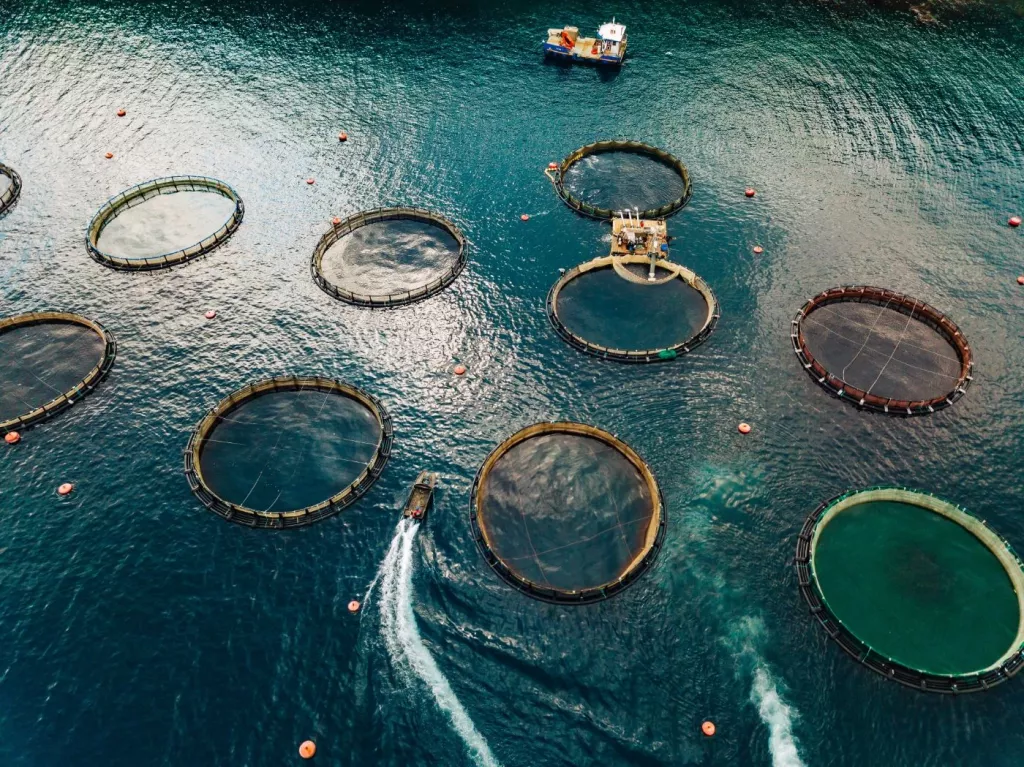
On this page:
7 Insider Tricks in Modern Fish Farming
1. Select a site that has access to clean water
Choose a suitable site for fish farming that has access to clean water, good soil, and proper drainage. The site should also be free from pollution, predators, and other potential hazards.
It's important to consider the availability of infrastructure, such as electricity and transportation, as well as the local regulations and zoning laws. Some other factors to consider include the availability of labor, the proximity to markets, and the potential for expansion.
2. Monitor water quality to prevent diseases
Maintain good water quality by monitoring pH levels, dissolved oxygen, and temperature. Use appropriate water treatment methods to remove pollutants and prevent the spread of diseases.
Monitor other factors such as ammonia, nitrite, and nitrate levels, which can be harmful to fish if they reach high levels. Regular water testing and treatment are essential to ensuring optimal water quality.
3. Maintain the optimal stocking density of the fish
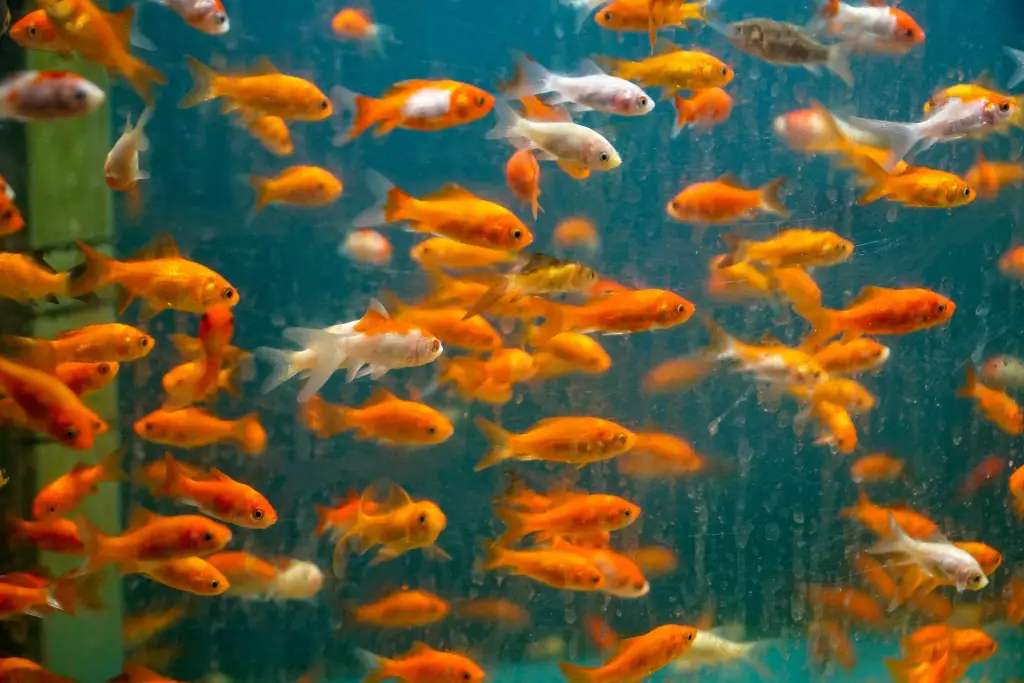
Avoid overcrowding fish in the tanks or ponds. Maintain a proper stocking density to ensure the good growth and health of the fish.
The optimal stocking density depends on the species of fish, the size of the tanks or ponds, and the water quality. Overcrowding can lead to poor growth, stress, and disease outbreaks. Understocking, on the other hand, can result in inefficient use of resources and low productivity. It's important to find the right balance and adjust stocking density based on the growth and health of the fish.
4. Observe proper feeding rate and frequency
Provide a balanced diet for the fish that contains all the essential nutrients. Feed the fish at regular intervals and avoid overfeeding, which can lead to water pollution and disease outbreaks.
It's important to consider the feeding rate and frequency. Overfeeding can lead to uneaten feed and water pollution, while underfeeding can result in slow growth and poor health. It's also important to consider the type of feed and its composition, as well as the feeding method (e.g., automatic feeders, hand feeding).
5. Practice disease prevention measures
Implement biosecurity measures to prevent the spread of diseases. This includes measures such as disinfection, quarantine, and vaccination. Quarantine new fish before introducing them to the farm and maintain good hygiene practices.

It's also important to monitor the fish for signs of disease and take prompt action if an outbreak occurs. Good hygiene practices, such as hand washing and equipment cleaning, can also help prevent the spread of diseases.
6. Consider the environmental, social, and economic sustainability
Adopt environmentally sustainable practices such as using renewable energy sources, reducing water usage, and minimizing waste. Use integrated multi-trophic aquaculture systems to recycle nutrients and reduce environmental impact.
Use energy-efficient equipment and reduce the use of antibiotics and chemicals. It's also important to consider the social and economic sustainability of the farm, such as the welfare of the workers and the impact on the local community.
7. Market your fish farm products
Develop a marketing plan to sell the fish. Identify the target market, develop a brand, and establish relationships with buyers, local markets, restaurants, and supermarkets to ensure a steady demand for the fish.
Fish Farming Techniques in the Modern World
These modern fish farming techniques can help you improve the sustainability, efficiency, and productivity of your aquaculture operations. If you want to benefit from the latest advancements in the industry, try incorporating these methods into your fish farm.
Recirculating aquaculture systems reuse water in fish tanks
Recirculating Aquaculture Systems (RAS) are a modern approach to fish farming that reduces water usage and waste production. In RAS, water is continuously filtered, treated, and reused within the system, drastically reducing the amount of fresh water needed. This allows you to grow fish in a more sustainable and environmentally-friendly way.
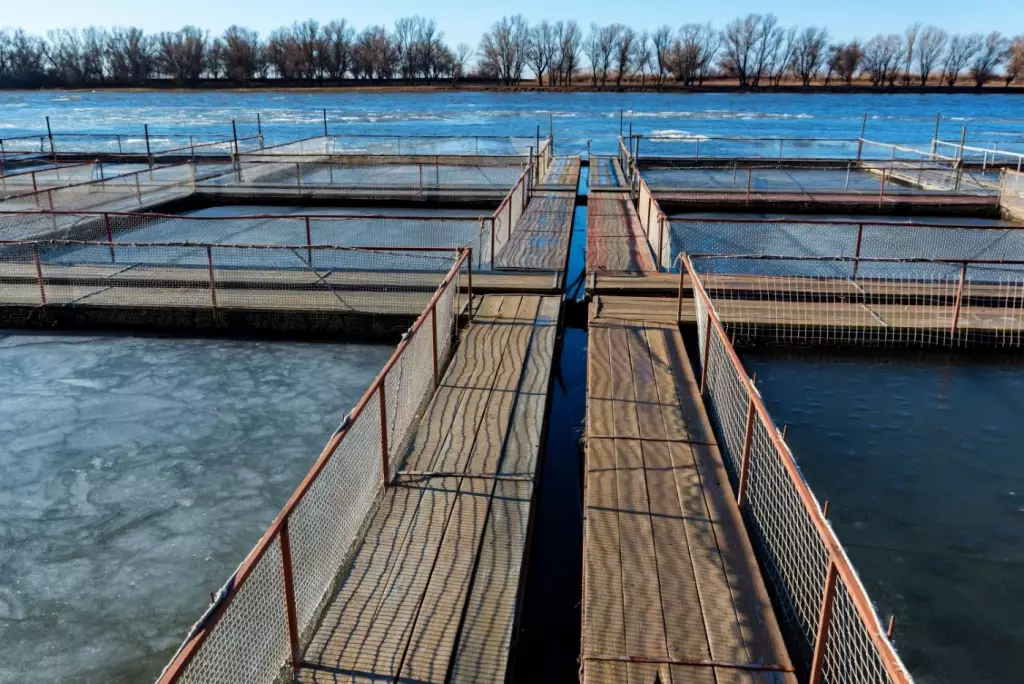
RAS is a technique that uses a closed-loop system to recycle and treat water in fish tanks. This method reduces water usage, eliminates the need for antibiotics and chemicals, and creates a more sustainable and eco-friendly environment for fish farming.
Integrated multitrophic aquaculture mimics natural ecosystems
Integrated Multitrophic Aquaculture (IMTA) involves growing multiple species of aquatic organisms in the same area to create a balanced and efficient ecosystem. This method mimics natural ecosystems and helps reduce waste, as the waste produced by one species can be used as a resource by another. This technique helps reduce the environmental impact of fish farming by utilizing the waste products of one species as food for another.
Biofloc technology develops a microbial community
This innovative fish farming technique involves the development of a dense microbial community within the culture water. These microbes help to convert waste products into useful nutrients, improving water quality and reducing the need for constant water exchange. This method can enhance the growth and feed efficiency of your fish.
Aquaponics grows fish and plants together
Aquaponics is a combination of aquaculture and hydroponics, where fish and plants are grown together in a symbiotic relationship. The waste produced by the fish provides nutrients for the plants, and the plants help filter the water. This method offers multiple benefits, including reduced water usage, increased production, and the ability to grow both fish and plants simultaneously.
High-density fish rearing grows more fish in a smaller space

This technique enables you to increase production by optimizing the stocking density and using advanced technologies to maintain water quality, temperature, and oxygen levels. It allows you to grow more fish in a smaller space, reducing the overall footprint of your farm and increasing efficiency.
Cage farming grows fish in floating enclosures
Cage farming involves growing fish in large, floating enclosures in natural bodies of water, such as lakes, rivers, or oceans. This method takes advantage of the natural environment while minimizing the impact on the surrounding ecosystem. Cage farming can be an effective way to expand your fish production without the need for large land areas or complex infrastructure.
Polyculture reduces the competition of fish for resources
This practice of growing multiple fish species together in the same pond or tank can help improve the overall health and growth of your fish by reducing competition for resources, promoting natural biological processes, and improving the utilization of available nutrients. Polyculture can lead to more sustainable and efficient fish farming practices.
Automated feeding systems increase fish growth rates
Automated feeding systems help improve the efficiency of fish farming by providing the right amount of food at the right time. This method reduces labor costs, increases fish growth rates, and improves feed conversion ratios.
Genetic selection improves productivity of fish farms
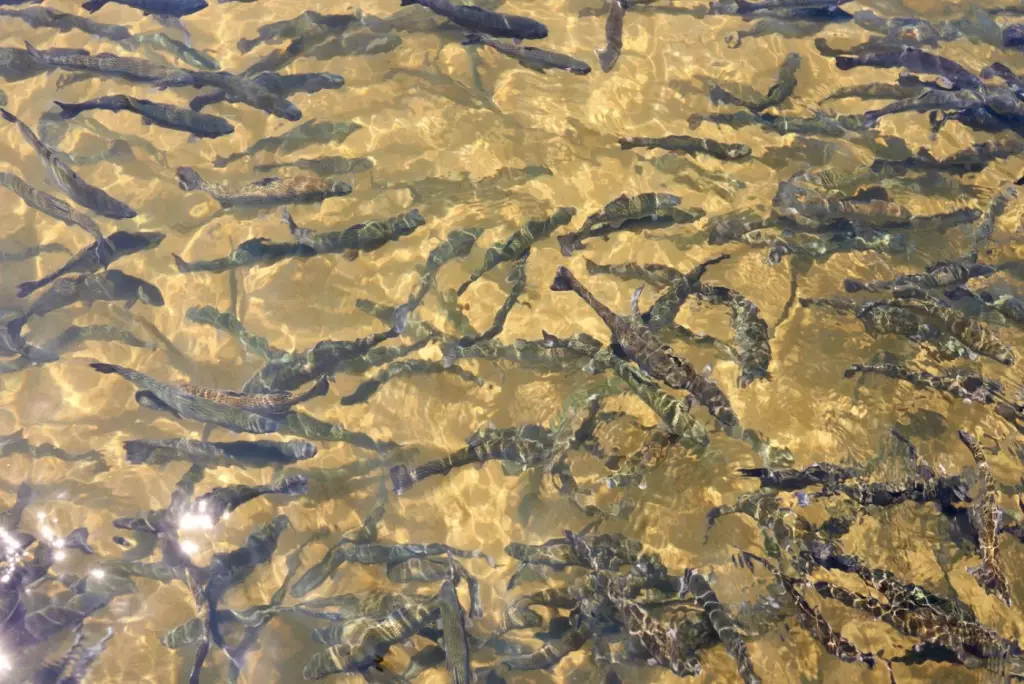
Genetic selection is a process that involves selecting and breeding fish with desirable traits such as disease resistance, growth rate, and feed conversion efficiency. This method helps to improve the overall health and productivity of fish farms.
Artificial intelligence and machine learning optimize efficiency
AI and machine learning technologies are being used in fish farming to monitor water quality, detect diseases, and optimize feeding regimes. They help to improve the efficiency and sustainability of fish farming operations.
Land-based aquaculture reduces pollution
Land-based aquaculture is a method of fish farming that involves raising fish in indoor tanks or ponds. This method reduces the environmental impact of fish farming by controlling water usage, reducing pollution, and improving fish health.
Vertical farming uses space efficiently
This method of fish farming involves stacking tanks vertically to increase production capacity. This method reduces the land footprint of fish farms and allows for a more efficient use of space.
Advantages and Disadvantages of the Fish Farming Methods
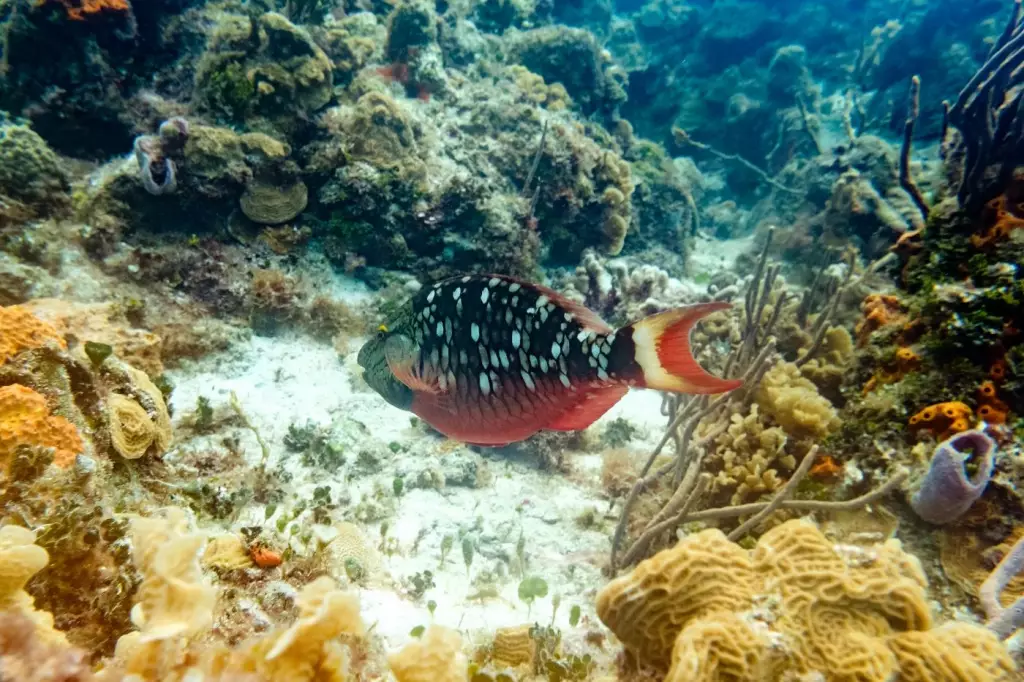
Benefits of modern fish farming techniques
You can enjoy a variety of benefits, which include a reliable supply of fish and keeping fish prices reasonable, thanks to modern fish farming techniques. New methods used in fish farming have helped regulate supply and demand in the seafood industry, partially mitigating overfishing in the wild.
Moreover, these advanced approaches have increased overall sustainability and reduced the environmental impact of fish farming. Innovative equipment such as specialized dredges help minimize damage to the seafloor and its inhabitants while efficiently harvesting various fish species.
Challenges of modern fish farming techniques
Despite the advantages, modern fish farming techniques also come with a few challenges and drawbacks. One concern arises from the use of open-net pens - a high-risk aquaculture method commonly employed to farm salmon. These pens allow for free exchange between the farm and the surrounding environment, potentially spreading diseases from farmed fish to wild fish populations.
Escapee fish from such farms can compete with native fish for food and habitat resources. Additionally, the introduction of non-native species into fish farms can pose a threat to native fish populations as they compete for the same resources.
